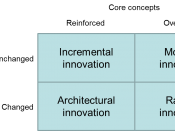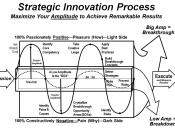In today's fast changing world, most of companies are likely to regard highly human resources with the purpose of increase the employees' productivity. 'Human resource management refers to activity undertaken to attract, develop and maintain an effective workforce within an organisation (Samson & Draft, 2003, p406). It is an important department of a company, the reason is which directly related with workers. In addition, understanding the behaviour of people in organisations has become increasing important, for instance, the feature of work life, the stress from job, the succession of career and employee productivity (Ivancevich, Olekalns & Matteson, 1997). Therefore, In order to assure highly productivity from employee, creativity and innovation are valuable method to use. However, due to the new methods and ideas to change, the negative affects occurring from employees' behaviour at the same time.
"Human resource management is concerted with the staffing function, and those functions concerned with attracting, maintaining and development people in the employment relationship"(Bartol, Tein, Mattews & Martin, 2005, p320).
In addition, human resource challenge changes from maximising return through increased productivity and profit from employee effort that achieving a balance of profit. While the organisation's of human resource is its employee, creativity and innovation of its employees is becoming increasingly important due to the organisation's capability to encourage. Employees are the most important and promising area of productivity improvement in an organization (Edosomwan, 1988). The success of any productivity programme depends on human innovative ideas and creativity. Thus, there is a need to look more closely into the human factor and consider its contribution to the improvement of productivity. Generally, there are some formal analyses of basis productivity factors such as 'output, input, labour, capital, technology and managerial motivation reveals' (Prokopenko, 1987, p 174). However, more than half of these factors are concerned with...


